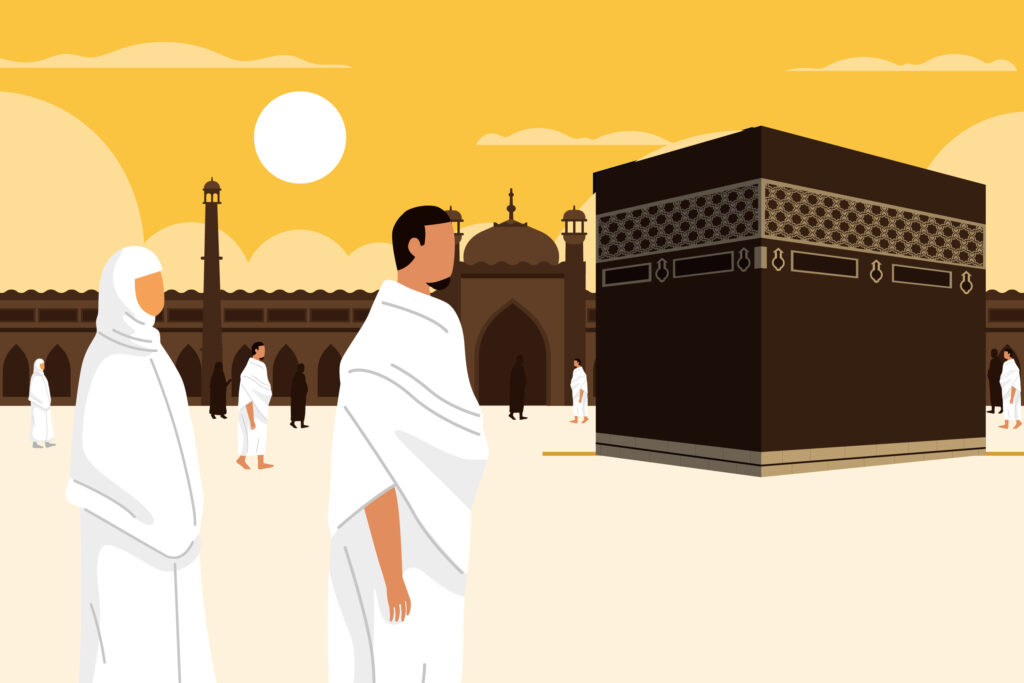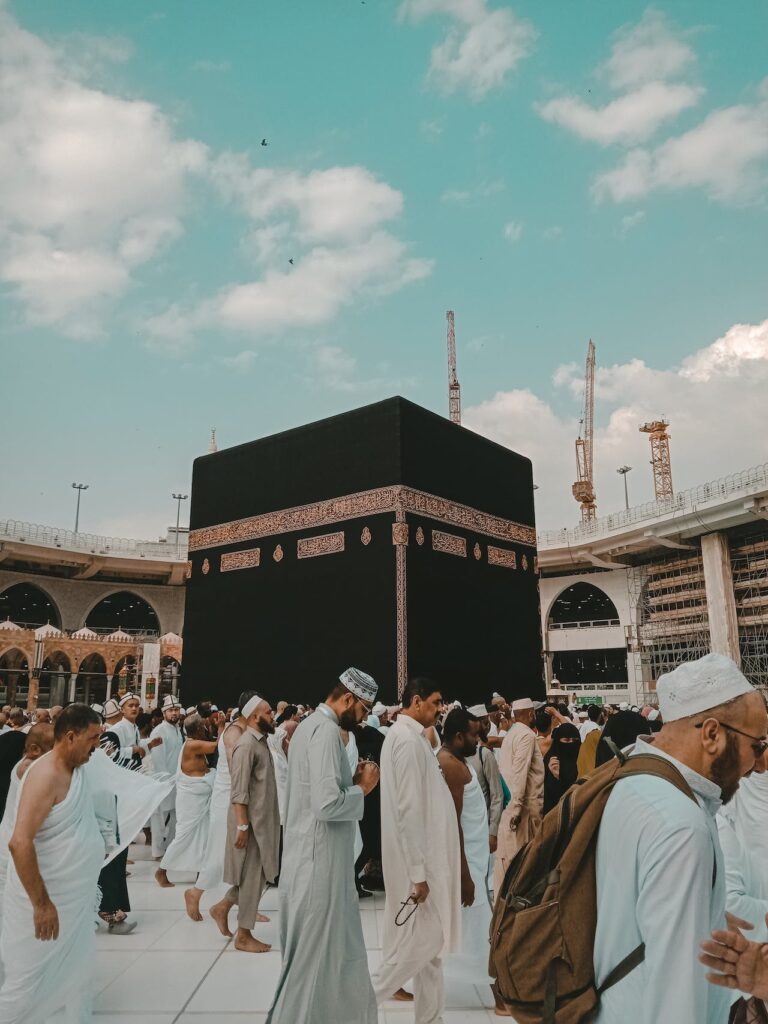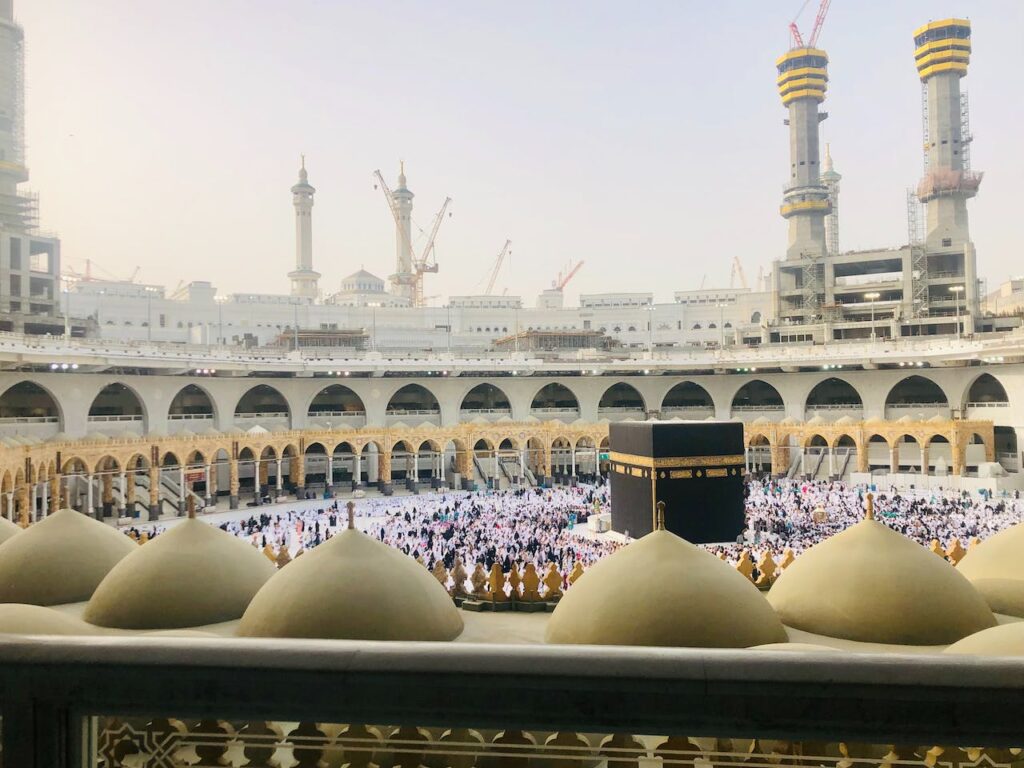Every year, millions of Muslims from around the globe congregate in Mecca for Hajj and Umrah, two pivotal Islamic pilgrimages. A vital part of these spiritual journeys is Tawaf, the ritual of circumambulating the Kaaba seven times. But what does this practice signify, and what are the intriguing facts of Tawaf? Let’s delve into the mysteries of this unique religious ritual.
Facts of Tawaf | What is Tawaf?
Here are some facts about Tawaf:
Firstly, Understanding Tawaf
Tawaf is more than just a physical act of devotion; it’s a spiritual journey, a symbol of the believer’s love for Allah. Participants move in a counterclockwise direction around the Kaaba, the cube-shaped building at the heart of the Grand Mosque in Mecca, Saudi Arabia. But why seven rounds? And what are Muslims supposed to say during Tawaf? To answer these questions, we need to delve deeper into the symbolism and significance of Tawaf.
Secondly, The Significance of Tawaf
The act of Tawaf resonates with profound spiritual meaning. It symbolizes the believer’s surrender to Allah, as they circumnavigate the Kaaba, which represents the metaphorical house of God. The number seven has a deep-rooted significance in Islamic tradition, reflecting the seven heavens mentioned in the Quran. While performing Tawaf, Muslims recite prayers and supplications, creating an atmosphere of deep devotion and spiritual connection.
Facts of Tawaf | Types of Tawaf
Did you know there are different types of Tawaf? Yes, each type has its unique significance and rules, which you can explore in-depth in this article about the different types of Tawaf.
- Umrah Tawaf: Also known as Tawaf al-Umrah, it is performed upon arrival in Mecca as part of the Umrah ritual.
- Tawaf Al-Wadaa (Farewell Tawaf): This is the final Tawaf performed before leaving Mecca after completing Hajj or Umrah. It is an emotional moment, signifying the end of a spiritual journey.
- Tawaf Al-Ifadhah (Rukn Al-Yaman): This Tawaf is performed after the day of Arafah, during the days of Tashreeq. It is an integral part of the Hajj rituals.
- Tawaf Al-Qudoom (Arrival Tawaf): This is the Tawaf performed upon arrival in Mecca by those performing Hajj. It is a welcoming ritual, marking the beginning of the spiritual journey of Hajj.
- Tawaf Al-Nafl (Virtuous Tawaf): This is a voluntary Tawaf that can be performed at any time, except during the time of the obligatory Tawaf. It is a demonstration of extra devotion and love for Allah.
Tawaf Steps
Performing Tawaf involves a series of steps, each with its own significance and spiritual meaning. These steps are carried out in a specific order to ensure the sanctity and smooth execution of this important ritual. Let’s walk through the steps involved in performing Tawaf:
- Step 1: Preparation for Tawaf – This includes ablution (Wudu), which is a ritual purification process involving washing specific body parts. It is important to be in a state of cleanliness before starting Tawaf.
- Step 2: Entry into the Masjid Al-Haram – Entering the holy mosque with the right foot first, reciting the recommended supplications, and expressing intent for Tawaf.
- Step 3: Entry into al-Hijr (the stone partition) – This step involves circumambulating the Kaaba outside the semi-circular area known as Hijr Ismail.
- Step 4: Starting the Tawaf – The Tawaf begins at the Black Stone. If possible, the pilgrim may kiss or touch it, or else it is acceptable to point towards it.
- Step 5: Finishing the Tawaf – After completing seven circuits around the Kaaba, the pilgrim ends the Tawaf at the Black Stone.
- Step 6: Going Out of al-Hijr – The pilgrim then moves out of the Hijr Ismail area.
- Step 7: Going Out of the Masjid Al-Haram – The pilgrim exits the mosque, marking the completion of the Tawaf.
Common Questions About Facts of Tawaf
Naturally, many questions arise when discussing Tawaf. Here are a few FAQs that might help clarify some of the most common queries.
Can You Drink Water During Tawaf?
Drinking water during Tawaf is permissible, but it is better to focus on the act of worship. Find out more in this enlightening piece about drinking water during Tawaf.
Can You Read Quran During Tawaf?
Yes, you can read Quran during Tawaf, but there is a specific etiquette to it. Learn more about it in this article on reading Quran during Tawaf.
What Are The Two Rakats After Tawaf?
After completing the Tawaf, Muslims are required to perform two Rakats of prayer near Maqam Ibrahim. Read more about it in this detailed post on the two Rakats after Tawaf.
How Long Does it Take to Finish Tawaf?
The duration of Tawaf can vary depending on several factors, including the crowd. Get a better understanding of the Tawaf distance and how long it takes to complete it in this comprehensive guide.
Conclusion
Performing Tawaf is a once-in-a-lifetime experience for many Muslims, a chance to express their devotion and connect deeply with their faith. Understanding the significance, rules, and facts of Tawaf can enhance this spiritual journey, making it even more meaningful and impactful. May your journey around the Kaaba be a source of immense blessing and spiritual growth? And may the mysteries of Tawaf continue to inspire you on your path toward greater understanding and devotion.






